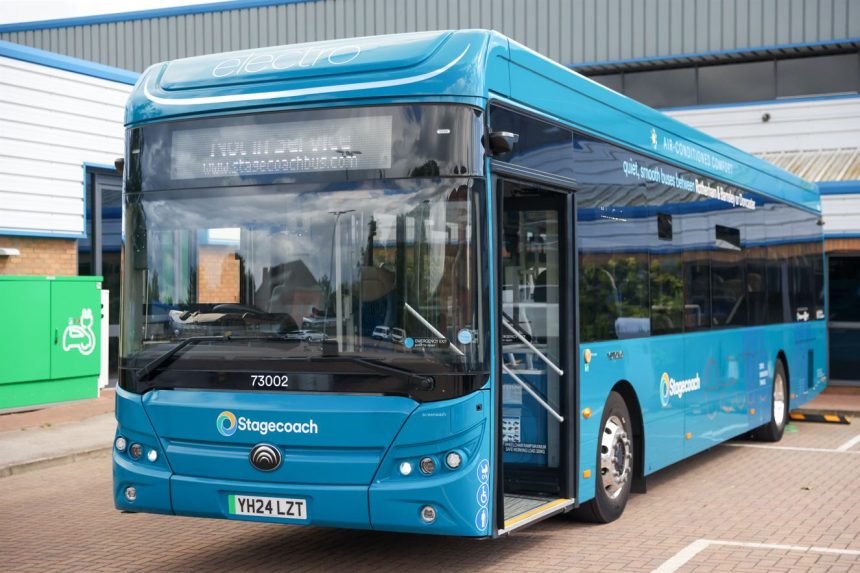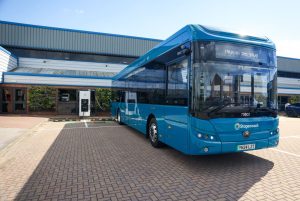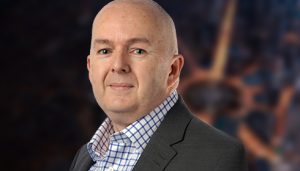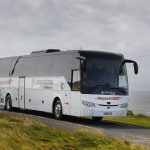In November 2024, Schneider Electric announced a collaboration with Stagecoach which sees the former assisting with the electrification of the operator’s bus fleets, supplying infrastructure, software and services throughout the transition.
Central to the partnership is Schneider’s ‘smart e-mobility’ solution, through which the energy giant is supplying electrical substations and ultra-rapid electric vehicle (EV) charging points. Software is used to control the flow of electricity to maintain energy efficiency and reduce emissions, while remote 24/7 monitoring and maintenance — delivered through a scheme called the EcoCare membership — makes the promise to minimise infrastructure downtime.
For Schneider, the partnership helps establish itself as “the most local” of global suppliers to the UK EV market. It has centres and manufacturing capability across the UK that is growing, and sells its solutions not just as good value for its customers but as a sustainable proposition in a market conscious of the cost of supply chain carbon footprints.
End-to-end e-mobility for Stagecoach and Schneider
Schneider’s approach is to deliver an end-to-end solution for its customers. In addition to the remote monitoring, Schneider’s solution for Stagecoach includes a substation that provides electricity from the grid in a single-source outdoor assembly, LV feeder pillars — an outdoor switchboard that feeds and controls electricity supply — and EV ultra-rapid charging stations.
A key aspect of Schneider’s offering is a “modular approach” that aims to scale to Stagecoach’s needs as its fleet grows.
David Hall, Schneider Electric’s Vice President, Power Systems, UK and Ireland, tells routeone that the process to electrification still presents a huge challenge for the EV market — not just for buses, but for all road transport where the switch is happening at a fast, but sometimes unpredictable, pace.
High capital expenditure (capex) required for rollout of infrastructure and assets currently results in a great deal of anxiety to see a return on investment. David reveals it would be easy for a company like Schneider to deliver the “end goal” of that infrastructure investment on day one at the price of heavy initial investment, but the supplier instead takes a more long-term approach.
“Our aim is not to sell as much as we can to the customer on day one, but to have a long-term partnership. To do that we have taken the approach that says we provide the infrastructure, and we can do that in a scalable way.”
Once an operator has secured a grid connection, Schneider can build a unit capable of hosting 42 vehicle chargers, but supplied initially with six to 10 chargers. The rest of the infrastructure is installed, minus the components in the pillar to supply the additional chargers. As an operator scales and electrifies more routes, capex can be systematically used to fill the new units that are being supplied.
“That gives an operator an easy way into this,” says David, “and what they don’t have to do is rip out any initial investment to upgrade to a larger unit. Key for these companies is that uptime is critical, so having chargers that don’t work, an unreliable supply or failures is painful for any business.
“Our EcoStruxure solution monitors assets 24/7, making sure we don’t see anything untoward. We have moved from reactive monitoring to a proactive approach. Where insurers were previously concerned about fire risk, this also negates that.”
The scalable approach provides a safety net. Utility companies, for example, also responsible for the rollout of EV chargers, benefit when the growth of electric vehicles stutters. “EV is a challenging market because there isn’t a lot of certainty,” David explains. “We’ve seen the electric car market stall, and buyers investing for the future have to be careful of how much capex they deploy versus the operational revenue they will get. For companies looking to deploy multiple sites around a region, if the infrastructure is deployed all in one site, they are limited on capex they can deploy elsewhere. What we’re seeing is companies put a smaller number of chargers in multiple venues, and as the uptake of vehicles increases, that enables them to grow faster and generate a revenue stream.”
Tony Cockroft, Asset Management and Infrastructure Director at Stagecoach, says that end-to-end approach has been one of the strongest draws for the partnership. “We partnered with Schneider mainly for a single point of contact across our electrical distribution equipment, allowing a quicker delivery time and for any issues to be cleared through one company — therefore benefitting the project timeline,” he explains. “We are utilising a standard set of equipment across our portfolio to give uniformity and familiarisation to onsite teams, which assists in the build stage and on-going maintenance.
“It is also important for us to have 24/7 monitoring of our equipment. The EcoStruxure platform offers this and will improve service uptime and reduce risk of in-service failures.”
Staying ahead of the curve
With many operators expressing hesitance to maintain current levels of investment until more certainty on regulatory approach is established in their regions, could a scalable approach akin to Schneider’s provide an essential safety net for investments into electric fleets?
That is hard to say. While the modular approach to electric fleet investment does not negate the risk entirely for any company in that situation, David argues it can reduce exposure by lowering the requirement for capex. Less tangibly, a proactive approach to electrification with a strong, scalable product could very well prove to a franchiser that a quality service offering is on the table, strengthening a bid. Building relationships at various levels from the collaboration must also inevitably occur for such projects to move forward.
Tony would not be drawn on whether Stagecoach feels such a scalable approach offers more security in its expansion plans. When it comes to collaboration with local authorities on delivering electrified fleets, the operator has for several years been among those leading from the front — but challenges remain where that partnership working is concerned.
“We have worked with local authorities, Transport Scotland and the Department for Transport across 40 projects throughout the UK over the last five years,” Tony says. “Our ambitions align as we all want to decarbonise local transport. It’s exciting when we finally energise a fleet which will deliver zero-emission transport for many years.
“Of course, there is always more that can be done to facilitate our plans, but we have to be realistic. The government has a myriad of challenges to overcome, and we appreciate there is only a limited budget. We collaborate with all stakeholders to aim to reduce total cost of ownership for electric fleets; this will help us to drive forward our decarbonisation plans.
“Focusing on infrastructure planning directly, this remains a challenge for all; local authorities do not control the electricity network, regional district network operators (DNOs) protect the local grid. DNOs are working hard to accommodate new power connections, but the feedback is that applications are heavily oversubscribed, and this can lead to excess connection times. There is only a limited amount of power available — so it’s important for us to work closely with DNOs to find innovative ways to share power and assist with our own on-site energy generation.”
Accelerating the transition
Back at Schneider, David notes that the push for decarbonisation is now at full throttle. Road traffic emissions statistics continually make for grim reading and more local authorities are exploring congestion charges and levies for polluting vehicles. To pursue those agendas, more and more local authority fleets will be based on green energy.
David agrees with Tony that one of the challenges for local authorities will be having the right partnerships in place to transition those fleets effectively. “Councils do what they do and they do it well,” he says. “But sometimes, when it comes to running bus fleets, or having independent operators such as car parks for normal e-mobility EVs, it’s better to lease that out and have somebody operate it in a more commercial fashion to help speed up the agenda,
“The car park operators we deal with have massive growth plans, and it’s the same for buses. Councils have to lead from the front in their local areas to be demonstrating renewable, green transport, and this will be fast now. Stagecoach is a prime example when you look at the number of depots it is starting to electrify. This is coming thick and fast, it’s now about how quickly finance can be deployed to make it work — and how keen the councils are to enable that.”
If partnership approach is what it takes, and local authorities are happy to franchise out or contract operation of buses, they must also facilitate an agreement that does not leave the private companies such as Stagecoach, which are footing the initial investment for that transition, exposed to stranded assets or the very real risk of going out to market having deployed infrastructure with reduced value or that cannot be resold easily to another operator.
Schneider’s role as a “local” global supplier plays a part in offering some security there — and that’s why it is building a new manufacturing facility in Scarborough, at the cost of £42 million, focused around the electrification of road transport.
“Electrification is a big part of our evolution and the growth agenda for us,” David says. “Transport is a massive part, and e-mobility is leading far faster at the moment than it is in other industries.”



























